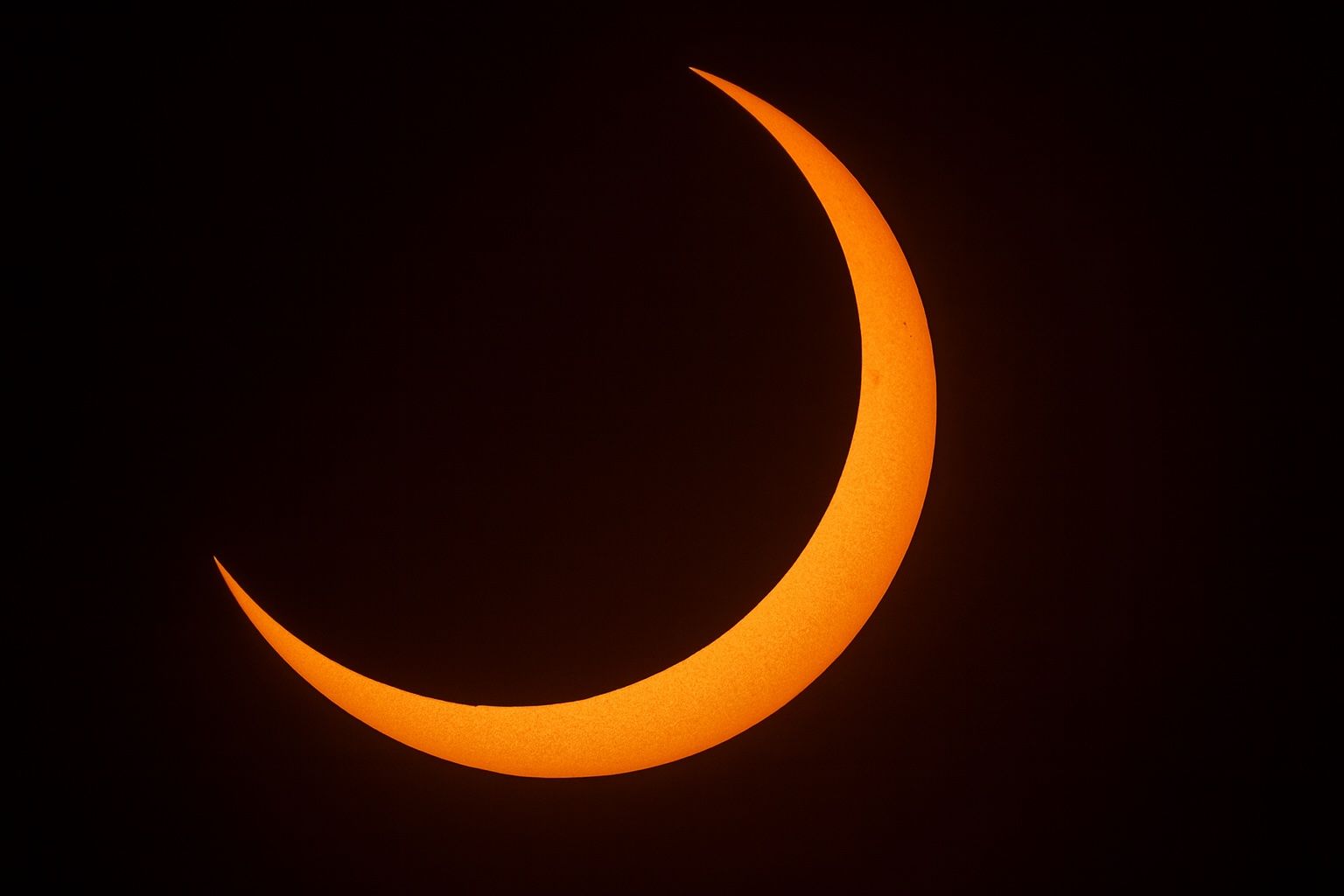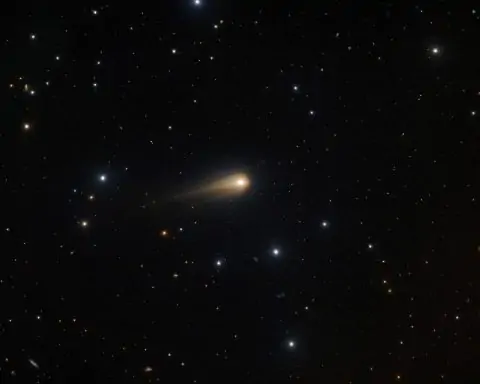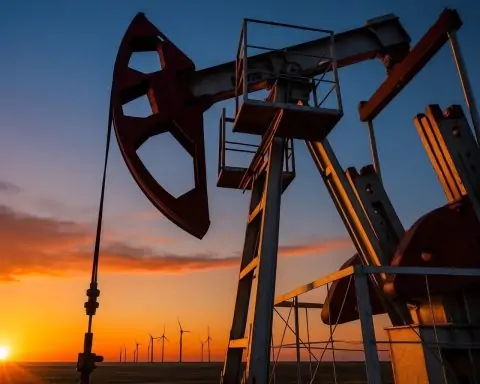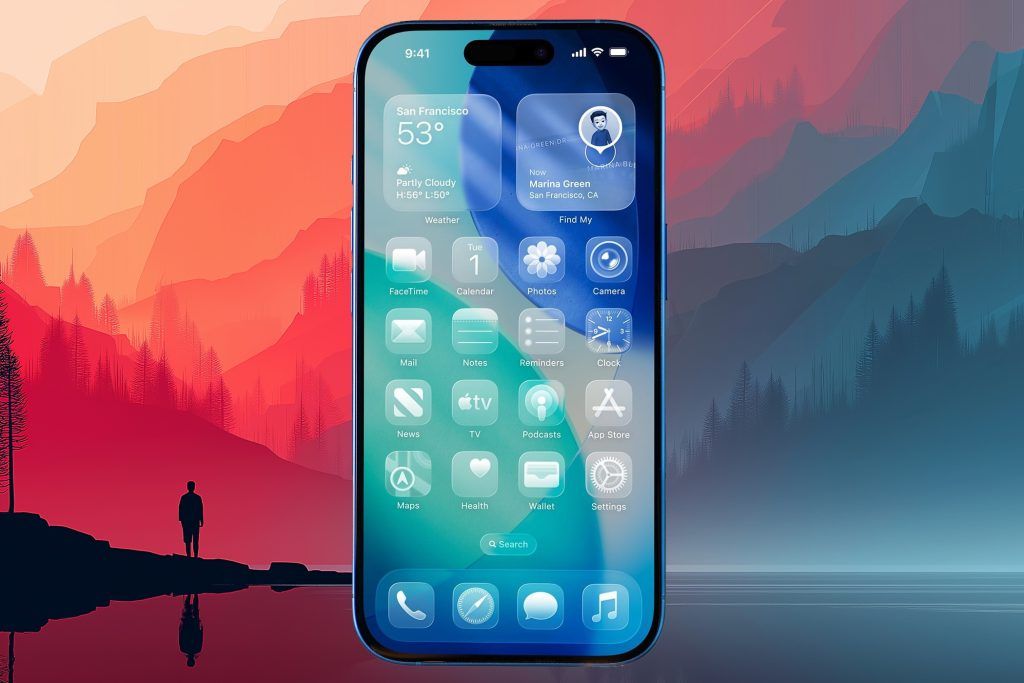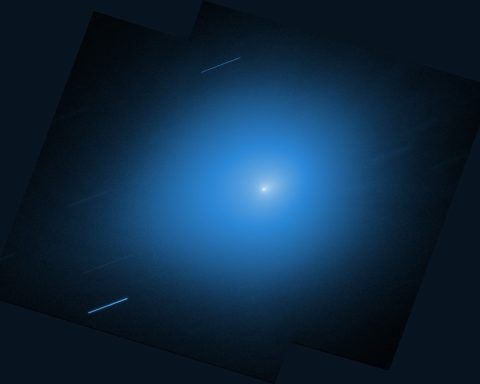- When & What: A partial solar eclipse occurs on Sunday, Sept. 21, 2025 (UTC), when the moon will “take a bite” out of the sun during the new moon phase [1]. It’s the second and final solar eclipse of 2025 [2], taking place just hours before the September equinox.
- Where Visible: Best viewed in the Southern Hemisphere – notably New Zealand, parts of eastern Australia, numerous South Pacific islands, and coastal Antarctica [3]. In southern New Zealand and Antarctica up to 85–86% of the sun will be obscured at peak [4] [5], creating a dramatic “crescent sunrise” on the horizon [6]. More northerly areas (e.g. Auckland) see ~60% coverage, while eastern Australia only catches a thin sliver (∼3% in Hobart) at sunrise [7].
- Timing: The eclipse begins around 17:29 UTC (1:29 PM EDT) on Sept. 21, reaches maximum coverage by ~19:41 UTC, and ends by 21:53 UTC [8]. Due to time zones, this corresponds to sunrise on Sept. 22 local time in New Zealand, Australia, and Antarctica [9] – an unusual dawn eclipse scenario.
- Equinox Coincidence: This eclipse falls on the equinox weekend. The September 22 equinox (18:19 UTC) occurs less than a day after the eclipse [10], meaning day and night are roughly equal worldwide. Experts note this rare pairing of eclipse and equinox offers an “especially memorable week of celestial events” [11].
- Safe Viewing Required:Never look directly at the sun during a partial eclipse without proper protection – solar eclipse glasses, certified filters on optics, or pinhole projectors are a must [12]. Unlike a total solar eclipse, no phase of a partial eclipse is safe to view with the naked eye, since part of the blinding solar disk always remains visible [13].
- How to Watch: Those outside the viewing zone can still watch live online. Organizations like NASA and TimeandDate will stream the eclipse in real time [14] [15]. If you’re in the viewing region, find a spot with a clear eastern horizon for sunrise. Use eye protection and enjoy the spectacle of the sun rising as a glowing crescent – a sight described as “as dramatic as it’s possible to see this side of a total solar eclipse” [16].
- What’s Next: Skywatchers can look forward to two major solar eclipses in 2026. On Feb. 17, 2026, an annular (“ring of fire”) eclipse will occur (visible primarily in Antarctica, with partial phases across parts of Africa and South America) [17]. Later that year, on Aug. 12, 2026, a total solar eclipse will sweep across Spain, Iceland, and the Arctic – a truly spectacular event [18]. Between eclipses, plenty of other celestial shows await, from meteor showers to lunar eclipses, but nothing quite matches the drama of the sun partially vanishing by moonshadow!
What is a Partial Solar Eclipse?
A partial solar eclipse happens when the moon passes between Earth and the sun but doesn’t completely cover the sun, so only a portion of the sun’s disk is obscured [19]. To an observer, it appears as if the moon has taken a “bite” out of the sun – leaving the sun as a bright crescent shape in the sky. In a partial eclipse the alignment isn’t perfect; the moon’s central shadow (umbra) misses Earth, so we only experience the penumbra (partial shadow) [20].
Because part of the sun remains visible, a partial eclipse does not darken the sky as dramatically as a total solar eclipse. There is no brief “nighttime” and you cannot see the sun’s corona (outer atmosphere) in a partial eclipse, unlike during the totality of a total eclipse [21]. Crucially, eye safety is paramount: at no point is it safe to view a partial eclipse without solar filters, since even a sliver of the sun’s surface can cause eye damage [22]. (By contrast, during the few minutes of a total solar eclipse’s full totality, it becomes safe to look momentarily with the naked eye – but only when the sun is 100% covered, which will not occur in this event.)
Solar eclipses in general occur only during the new moon phase, when the moon is directly between Earth and sun. However, we don’t get an eclipse every new moon because the moon’s orbit is tilted (~5°) relative to Earth’s orbit. Usually the moon’s shadow passes above or below Earth. Only when the new moon happens to align near the orbital crossing points (nodes) do we get a solar eclipse [23]. Partial eclipses like this one are essentially “near misses” – the alignment is close but not dead-on, so the moon’s inner shadow cone doesn’t hit Earth. Even so, a deep partial eclipse can be a stunning sight, especially at sunrise or sunset when the partially covered sun is low on the horizon and easy to photograph (with filters!).
Sept. 21, 2025 Eclipse: Where and When to See It
Mark your calendars: On September 21, 2025 (UTC), the moon’s shadow will graze the Earth’s southern regions, producing a partial solar eclipse visible across a swath of the South Pacific. This eclipse is centered far in the Southern Hemisphere, so most of the world (including all of the Northern Hemisphere) will not see it. But for those in the right places, it will be a remarkable event – even if more penguins than humans are in the prime viewing zone!
“On 21 September (UTC) there will be a partial solar eclipse, visible from parts of New Zealand, a narrow region of eastern Australia, several Pacific Islands, and parts of Antarctica. Because of time zones, people in New Zealand will see the eclipse at sunrise on 22 September local time. In southern New Zealand and nearby regions, the eclipse will be especially deep, with over 85% of the Sun obscured. In contrast, places like Sydney and Brisbane will see only a very slight eclipse, while many Pacific Islands such as Samoa and Tonga will experience more modest coverage, typically below 30%.” — Dr. Shyam Balaji, astrophysicist, King’s College London [24]
Geographic extent:New Zealand enjoys some of the best views. The eclipse occurs there just after 6 AM on Monday, Sept. 22 local time, as the sun is rising [25]. In fact, the sun will rise already partially eclipsed in New Zealand – a rare “crescent sunrise”. Southern parts of NZ get the deepest eclipse: for example, in Dunedin (South Island) the sun rises with ~72% of its disk already covered by the moon, reaching a maximum of ~72% coverage about 40 minutes after sunrise [26]. Farther north in Auckland, the maximum coverage is smaller (~61%) [27]. The absolute peak coverage (~85–86% of the sun obscured) occurs over the ocean and parts of Antarctica’s Ross Sea, as well as the extreme south of New Zealand (Stewart Island and Campbell Island) [28] [29]. Such an eclipse is sometimes called a “deep” partial eclipse [30] – a substantial chunk of the sun is hidden, though not a total blackout.
Many Pacific Island nations in the path will see a partial eclipse around dawn on Sept. 22 (local date). For instance, areas of Tonga, Samoa, Fiji, Niue, and the Cook Islands can witness the moon taking a bite out of the rising sun [31] [32]. However, coverage there is more modest – generally ranging from about 10% to 30% of the sun’s diameter covered [33]. In Fiji and Tonga, viewers will see a small crescent sun at sunrise (around 10–25% obscured) [34].
A thin strip of eastern Australia will also get a fleeting glimpse. Only the far southeast (e.g. parts of Tasmania and perhaps the tip of New South Wales/Queensland coast) lies at the edge of the eclipse’s penumbral shadow. In Hobart, Tasmania, for example, about 3% of the sun will be covered just after sunrise (around 6:00 AM local) [35]. Most Australians outside that sliver won’t notice anything, as the eclipse magnitude diminishes to zero just inland. Essentially, if you’re not right on the eastern coastline at dawn, you’ll miss it.
Meanwhile, down in Antarctica, the eclipse will be quite pronounced for research stations in the continent’s northwestern quadrant (facing the Pacific). Because spring is just beginning there (with the sun emerging after winter darkness), a handful of researchers – and countless penguins – near the Antarctic coast will witness up to 85% of the sun blocked by the moon [36] [37]. In fact, one commentator quipped that more penguins than people are perfectly positioned for this eclipse [38]. For human observers in Antarctica’s Ross Sea sector, the eclipse happens around local “morning” of Sept. 22 as well, with the sun low on the horizon.
Exact timing: In UTC (world standard time), the partial eclipse begins at ~17:29 UTC on Sept. 21 [39]. That is late morning/afternoon of the 21st in Europe/Americas, but in the local time zones of the Pacific regions it will be the early morning of Sept. 22. The moment of greatest eclipse (when the moon covers the largest portion of the sun) occurs at 19:43 UTC [40]. Around that time, observers in the center of the eclipse path (over the ocean south of New Zealand) see the sun ~85% obscured [41]. Finally, the last glimpse of the moon’s shadow on Earth fades by 21:53 UTC when the eclipse ends [42]. In New Zealand local time (NZST), this corresponds roughly to 5:53 AM on Sept. 22. In short, the event lasts about 4 hours from first shadow to last, but any given location will experience a partial eclipse for at most 1–2 hours (often less, depending on how central they are).
Weather permitting, people in southern NZ have the best chance to appreciate the spectacle. If you’re in places like Christchurch, Dunedin, or Invercargill (which lie near the eclipse path center), plan to wake up early on Sept. 22, find an unobstructed view of the eastern horizon, and watch the sunrise turn into a fiery crescent. If clouds cooperate, the view could be stunning – the low sun’s light filtered through atmospheric haze, with a huge “bite” missing from it. It’s a photographer’s dream (with the right solar filters)! Meanwhile, those at Antarctic research bases will have a unique photo op: a heavily eclipsed sun hovering over icy landscapes.
However, for most of the world, this eclipse won’t be visible. Populous areas in the Americas, Europe, Asia, and Africa are out of the shadow’s reach. Even in the Southern Hemisphere, the population within the eclipse viewing zone is small – one estimate suggested only around 400,000 people live in the areas where the eclipse will cover more than 70% of the sun [43]. By comparison, tens of millions were in the path of recent total eclipses. This rarity of being in the right place is part of what makes any solar eclipse special. If you’re not among that lucky few this time, don’t fret – you can join via live webcast, and plenty more eclipses are coming (see further below).
Why This Eclipse is Special: The Equinox Connection
One intriguing aspect of the Sept. 21, 2025 event is its timing relative to the autumnal equinox. The eclipse occurs just hours before the September 22 equinox, an astronomical milestone when the sun crosses Earth’s equator. Equinoxes (which happen every March and September) mark the change of seasons – in this case, the start of autumn in the Northern Hemisphere and spring in the Southern Hemisphere. Day and night are nearly equal in length across the globe during an equinox [44].
Because the eclipse and equinox coincide so closely in date, some have dubbed this the “Equinox Eclipse.” It’s a poetic coincidence: one event is caused by the geometry of the sun, moon, and Earth lining up, and the other is caused by Earth’s tilt as we orbit the sun. They’re unrelated cycles, yet in late September 2025 they sync up, giving skywatchers a double spectacle in the same 24-hour period. As Dr. Shyam Balaji explains, “Although the solar eclipse and the equinox are governed by entirely different orbital cycles, this year they happen close together, giving skywatchers an especially memorable week of celestial events.” [45]
The equinox timing also means the eclipse happens when the sun is nearly above the equator. In practical terms, that places the moon’s shadow over high southern latitudes (since the moon’s orbit tilt determines the shadow’s path). It’s relatively uncommon for an eclipse to fall so near the equinox date; when it does, it can lead to interesting scenarios like this eclipse at local sunrise. (In contrast, some eclipses occur near solstices in June or December, and those often appear high in the sky or at different times of day for a given region.)
While the equinox itself doesn’t affect the eclipse’s appearance, the pairing of these two events is getting attention in news coverage. It’s a great reminder that astronomy is full of cycles occasionally overlapping. On the equinox, everyone worldwide experiences nearly 12 hours of day and 12 of night. And within that same global “equal night” timeframe, a lucky few also experience the moon crossing the sun’s face at dawn. For astronomy enthusiasts, it’s a delightful convergence – a sort of celestial two-for-one.
How to Observe the Eclipse Safely
Safety first: Viewing a solar eclipse can be an unforgettable experience, but it must be done safely to protect your eyes. Never look directly at the sun during any phase of a partial eclipse without proper eye protection – doing so can cause serious and permanent eye injury [46]. Here are some safe viewing methods and tips for the public:
- Eclipse Glasses: Use certified solar viewing glasses (often referred to as “eclipse glasses”) that meet the ISO 12312-2 safety standard. These look like cardboard 3-D glasses but have special black polymer lenses that block 99.999% of intense sunlight. Regular sunglasses are NOT sufficient. Always inspect eclipse glasses for scratches or damage before use; if damaged, do not use them. Wear them whenever looking at the sun, especially during partial phases. Remember, during this event the sun will never be fully covered, so keep the filters on the whole time [47].
- Solar Viewers & Filters: Alternatively, use a handheld solar viewer or welder’s glass of shade 14. If you plan to observe through a telescope, binoculars, or camera, you must attach a proper solar filter to the front of the lens/objective (not just the eyepiece) [48]. Concentrated sunlight through optics can blind or burn within seconds, so never point binoculars or telescopes at the sun without certified solar filters firmly in place. Many astronomy retailers sell solar filter sheets or caps designed for this purpose. Double-check that any filter is secured and rated for direct sun viewing.
- Pinhole Projector: One easy and safe way to watch an eclipse is by projection. You can make a simple pinhole projector with household items [49]. For example, take a piece of cardboard and punch a small, clean pinhole in it. Stand with your back to the sun and let the sunlight pass through the hole onto a second surface (like another paper or the ground). You’ll see a projected image of the eclipsed sun on that surface – a tiny crescent shape during the eclipse maximum. This method lets you observe indirectly. You can also use crossed hands, colanders, or leafy tree shadows to project multiple little crescent suns on the ground. It’s fun for kids and completely eye-safe.
- Find a Clear View: Because this eclipse occurs at sunrise in the viewing regions, make sure you have an unobstructed view toward the east. Hills, buildings, or trees could block the low sun. Plan to get to a location with a clear horizon (e.g. a beach, hilltop, or open field). In New Zealand, the sun rises in the east around 6 AM in late September, so scout a good spot beforehand if possible. Be mindful of local weather forecasts – coastal mornings can sometimes be foggy or cloudy, so you might want a location above any fog layer.
- Photography: If you’re attempting to photograph the eclipsed sun, use a solar filter on your camera lens to avoid sensor damage and to get a proper exposure of the sun’s surface. DSLR or mirrorless cameras can capture the crescent sun with a telephoto lens (with filter). Even smartphones can take partial eclipse shots if you hold eclipse glasses over the camera lens (results vary). Remember to still wear your own eclipse glasses while aligning shots; don’t be tempted to look directly just to frame a photo.
If you cannot travel to the eclipse zone, you’re not out of luck. Several organizations will host live streams of the event. Notably, Timeanddate.com (a reliable source for eclipse info) is known to live-stream eclipses in collaboration with observatories. In fact, Space.com has set up a feed so you can “watch all the action unfold live” via TimeandDate’s webcast [50]. NASA often shares eclipse images or streams as well, especially if their scientists are on site in Antarctica or if a partner observatory is broadcasting [51]. Tuning into a live stream can be a great safe alternative – you might even get multiple camera views from different locations (for example, one from New Zealand and another from Antarctica). Plus, expert commentators usually explain what’s happening in real time.
Lastly, remember to enjoy the moment. If you are on location viewing the eclipse, take some time to just observe with your protected eyes (not solely through a camera). Notice the eerie quality of light as the sun turns into a crescent. The landscape may take on a subtle dawn twilight hue if the eclipse is deep (though it won’t go fully dark). Feel the temperature drop slightly as less sunlight reaches you. These sensory experiences are part of what makes witnessing an eclipse in person so memorable.
The Science Behind Eclipses and This One’s Place in the Cycle
Solar eclipses are a celestial alignment of the Sun, Moon, and Earth. As noted, they can only happen at new moon, and only when the moon’s orbit crosses the ecliptic plane (Earth’s orbital plane around the sun). The points where the moon’s path crosses this plane are called nodes. If the new moon is near a node, the sun, moon, and Earth can line up enough for an eclipse. If it’s perfectly aligned, the moon’s umbra (full shadow) touches Earth, causing a total solar eclipse (or an annular eclipse if the moon is too far and appears small). If it’s slightly off-center, only the penumbra (partial shadow) reaches Earth, resulting in a partial eclipse like the one on Sept. 21, 2025 [52]. In this case, the moon was near its descending node (going south of the ecliptic) but not perfectly centered [53].
This particular eclipse has some interesting scientific context:
- Depth and Moon’s Distance: It’s described as a “deep” partial eclipse because up to ~85% of the sun’s diameter is covered at maximum [54]. The eclipse’s magnitude (fraction of sun’s diameter covered) is 0.855 [55]. However, it never reaches totality. Notably, this eclipse occurs with the moon about 4.6 days before apogee (its farthest point from Earth) [56]. A more distant moon appears slightly smaller in the sky. Even if this alignment had been exact, the moon’s apparent size might not completely cover the sun’s disk – meaning if central alignment occurred, it could have been an annular eclipse (“ring of fire”). But since the alignment is offset, we see a partial. The moon’s apparent small size contributes to the sun’s substantial crescent remaining visible.
- Saros Series: Eclipses are not random one-offs; they belong to families called Saros cycles. Every ~18 years, a similar geometry of sun-moon-Earth repeats, producing an eclipse that is part of a series. The Sept. 21, 2025 eclipse is part of Saros series 154, and it is the 7th eclipse in that series (out of a total of 71 eclipses in Saros 154) [57]. All eclipses in this series occur at the moon’s descending node. Over centuries, as the series progresses, the eclipses will gradually shift location and character. Saros 154 started with a partial eclipse and will eventually produce central eclipses (likely annular or total) as the alignment becomes more direct in mid-series, then end with partials again. The Saros cycle is why an eclipse very similar to this one will occur 18 years earlier/later – indeed, the predecessor of this eclipse (Saros 154 number 6) happened in September 2007, and the next (number 8) will occur in October 2043 with comparable geometry.
- Eclipse Seasons: Eclipses often come in pairs or triplets during specific windows. These windows are called eclipse seasons, roughly 34–35 days long, during which the sun is close enough to a lunar node that any new moon or full moon will result in an eclipse [58]. Typically, a solar eclipse and a lunar eclipse occur about two weeks apart in a season. In 2025, the September partial solar eclipse was paired with a total lunar eclipse earlier in the month. In fact, on Sept. 7–8, 2025, there was a spectacular total lunar eclipse (a “Blood Moon”) visible across much of the world [59]. Just two weeks later, the conditions were right for the new moon to give us this solar eclipse, making it the second eclipse of the same season [60]. This second eclipse season of 2025 thus had two eclipses (one lunar, one solar). The first eclipse season of 2025 occurred in March, with a total lunar eclipse on March 13–14 and a partial solar eclipse on March 29 [61]. It’s common to get two eclipses in a season, and occasionally three (if timings line up just right).
This tells us the Sept. 21 event effectively “wraps up” the eclipse season and the year’s eclipses. As noted, it’s the last eclipse of the year 2025 [62]. After this, there won’t be another solar or lunar eclipse until the next season, which comes in early 2026.
From a broader perspective, 2025 was an interesting year for eclipse chasers: it had four eclipses in total – two partial solar eclipses (March 29 and Sept. 21) and two total lunar eclipses (March and September) [63]. No total or annular solar eclipse occurred in 2025 (the last total was in April 2024, and the next would be in 2026). So both solar eclipses of 2025 were partials that many people outside the narrow paths likely missed. This makes skywatchers even more eager for the dramatic eclipses on the horizon (literally and figuratively) in the next couple of years.
One fun fact: The ability of the moon to cover the sun at all – whether partially or totally – is a cosmic coincidence of size and distance. The sun’s diameter is about 400 times larger than the moon’s, but the moon is also about 400 times closer to Earth than the sun [64]. So from Earth, they appear almost the same size in the sky. This is why we can experience total solar eclipses where the moon exactly covers the sun. In the case of this partial eclipse, the alignment is a bit off-center, so the apparent sizes don’t lead to full coverage – but we still benefit from that 400-to-400 ratio making the disk sizes comparable. Interestingly, the moon is slowly drifting away from Earth (about 3.8 cm per year) [65]. In some 600 million years, the moon will appear too small to ever completely cover the sun, and total solar eclipses will cease, leaving only partial and annular eclipses [66]. We live in a fortunate era to witness these phenomena.
Eclipse Comparisons: How It Stacks Up Against Other Celestial Events
Partial vs. Total vs. Annular: Solar eclipses come in a few varieties. A total solar eclipse is the most dramatic – the moon entirely covers the sun, turning day to night for a few minutes and revealing the sun’s corona as a ghostly halo. A partial eclipse (like Sept. 21’s) is less dramatic in that daylight still persists (the sky merely dims a bit, if the eclipse is deep enough, akin to an odd twilight). You won’t see stars or planets come out, and the corona remains hidden by the glaring part of the sun that’s still exposed. An annular eclipse occurs when the moon is directly aligned but too small (far away) to cover the sun fully, resulting in a “ring of fire” – a bright ring of sun surrounding the moon’s silhouette. Annulars are spectacular in their own way (the sky turns dim, but not dark, and a perfect bright ring is visible), yet they also require eye protection throughout since part of the sun is always showing.
In terms of viewer experience: a deep partial eclipse, especially at sunrise or sunset, can be very beautiful – the sun becomes a crescent and you might notice unusual lighting on the environment. However, it generally doesn’t compare to the jaw-dropping spectacle of a total eclipse at midday, where the entire sky changes and the sun’s corona, pink prominences, and even bright stars pop into view. As one science writer noted, a deeply eclipsed sun on the horizon is “as dramatic a sight as…possible to see this side of a total solar eclipse” [67] – meaning it’s the next best thing to a total. This Sept. 21 partial is “deep” but still, no daytime stars will appear and you won’t get the full blackout. People who have seen a total solar eclipse often describe it as life-changing. By comparison, observers of a partial might simply find it neat or interesting. That said, every eclipse has its charm: for instance, this one’s sunrise timing offers unique photo opportunities (a eclipsed sun against the horizon or behind landmarks, if you’re in the right spot).
Lunar Eclipses: Unlike solar eclipses, lunar eclipses occur when Earth’s shadow falls on the full moon. They are safe to view with the naked eye and tend to have a broader visibility – an entire hemisphere of Earth can see a lunar eclipse since the moon is visible to half the world at any given time. For example, the total lunar eclipse on Sept. 7, 2025 was visible across Europe, Africa, and Asia [68], reaching far more people than the Sept. 21 solar eclipse could. Lunar eclipses often turn the moon a reddish color (“Blood Moon”) and last longer (hours of partial phases, with totality lasting up to ~1 hour). They happen about as frequently as solar eclipses in a year (typically 4–7 eclipses of all types occur annually, counting both solar and lunar [69]). Many skywatchers find lunar eclipses easier to observe (no special equipment needed, and you can look directly at the moon) and more accessible. However, a lunar eclipse, while eerie and beautiful, doesn’t quite have the visceral wow factor of the sun vanishing in daytime.
It’s interesting that in 2025, the same regions (South Pacific and Australasia) that got the solar eclipse on Sept. 21 also saw the total lunar eclipse two weeks prior. This is no coincidence – the alignment that causes a solar eclipse tends to also cause a lunar eclipse visible from roughly the opposite side of the globe, because the geometry lines up within an eclipse season. If you were in, say, New Zealand in September 2025, you could have seen the moon turn red on Sept. 8 and then the sun turn into a crescent at dawn on Sept. 22. That’s a special treat for that part of the world. Meanwhile, observers elsewhere enjoyed the lunar eclipse but missed the solar, or vice versa.
Meteor Showers & Other Sky Events: How does a partial solar eclipse compare to other popular celestial events like meteor showers, planetary alignments, etc.? One big difference is rarity and planning. Meteor showers (e.g. the Perseids in August or Leonids in November) occur annually and are visible over wide areas (entire continents or hemispheres) if the sky is dark and clear. You don’t need any equipment – just go out at night and watch for shooting stars. They can be spectacular (with dozens of meteors per hour at peak for a good shower [70]), but they’re also somewhat hit-or-miss (you might see lots of meteors or only a few, depending on conditions). A partial solar eclipse, on the other hand, is an event you either are in the narrow path for or not. It’s more exclusive. If you are in the right place, the experience is guaranteed (weather permitting) and very definite – you will see the moon covering the sun at the predicted time. There’s a thrill in that predictability and precision, whereas meteor showers require patience and luck.
Another difference: time of day and social impact. Solar eclipses happen during daytime and often become communal viewing events – schools might take kids out with solar glasses, friends gather to watch, etc. A meteor shower or lunar eclipse happens at night, often late, so fewer casual observers might notice unless they’re specifically interested. Eclipses also draw travelers; people will fly or drive to the path of a major solar eclipse (especially total eclipses) to witness it. Partial eclipses like this one might not trigger as much eclipse tourism (since it’s not totality), but certainly local astronomy groups in NZ and the Pacific planned events around it. Lunar eclipses and meteor showers usually don’t spur travel in the same way (since one can see them from vast areas, you just need clear skies).
Scientific observations: Total solar eclipses historically have been important for science (e.g. confirming relativity or studying the corona). Partial eclipses have less scientific yield in that sense, but they are still used for outreach and sometimes for studying the sun’s output changes. Meteor showers, conversely, are scientifically about debris streams and don’t typically capture public imagination beyond the spectacle.
In summary, the Sept. 21, 2025 partial solar eclipse is a notable celestial event particularly for those in its viewing path. While it may not have the worldwide fanfare of a total eclipse or the frequency of an annual meteor shower, it offered something unique: a serene Antarctic and New Zealand sunrise with a gigantic solar crescent hanging in the sky. It’s a reminder of the dynamic dance between sun, moon, and Earth, and for those who saw it, it surely ranks as a highlight of the year’s astronomical calendar.
News and Expert Commentary
In the lead-up to September 21, 2025, astronomy news outlets and experts provided context and excitement about this eclipse. Many dubbed it the “Equinox Eclipse” because of its timing, and emphasized how rare it is for an eclipse to coincide with the change of seasons [71]. Media coverage noted that this would be the last solar eclipse of the year and encouraged enthusiasts to catch it if possible (especially since 2025’s previous solar eclipse in March was also partial and similarly limited in visibility).
Experts highlighted the event’s remote nature. As one Live Science report quipped, the best view might be had by penguins in Antarctica, with “more penguins than people” likely experiencing the ring-of-fire effect in the next annular eclipse [72] [73]. For this partial eclipse, the “handful of people (and millions of penguins)” in the right spots would see the spectacle of a lifetime [74]. This lighthearted commentary underlined the fact that most humans were outside the eclipse zone – adding a bit of FOMO (fear of missing out) but also explaining why live streams were set up.
Astronomers in New Zealand and Australia treated the event as a big opportunity. Local news in NZ described how areas like Dunedin would get a significant eclipse at sunrise. Some observatories and astronomy clubs organized public viewing events at dawn on Sept. 22 (weather permitting), providing solar glasses and telescopes with filters for people to safely watch the sun come up crescent-shaped. These events aimed to educate the public about eclipse science and safe observing. The alignment with the equinox was an added educational hook – some science communicators explained how an equinox works (Earth’s tilt, equal day/night) in the same breath as explaining the eclipse geometry [75].
Professional astronomers also weighed in on the pairing with the earlier Blood Moon (total lunar eclipse) that month. They explained the concept of eclipse seasons to the public: one expert noted that “eclipses usually arrive in pairs…two weeks apart…during an eclipse season”, helping people understand why a lunar and solar eclipse came back-to-back [76]. This eclipse, coming on Sept. 21/22, was a textbook case of that pattern, following the Sept. 7–8 lunar eclipse. The same expert (Dr. Balaji) reminded everyone that this solar eclipse is the final one of 2025, implying the next chance to see a sun eclipse would be in 2026 [77]. His emphasis on never looking directly at the Sun without proper protection also made it into press quotes – a crucial safety reminder given that some might be tempted to glance at the rising sun.
Space agencies and organizations like NASA provided information as well. NASA’s eclipse bulletins noted the regions of visibility (“Australia, Antarctica, Pacific Ocean, Atlantic Ocean” edges for this partial eclipse) [78] and listed it among the upcoming eclipses on their calendars. NASA Science outreach also often shares interesting trivia, such as the previously mentioned fact about the sun and moon’s apparent size coincidence [79], to capitalize on eclipse interest to teach a bit of astronomy. While NASA did not send a major expedition for this partial eclipse (as they might for a total eclipse), they did help amplify live feeds from partners and shared images if available. For example, images from a weather satellite or from Antarctic researchers were expected after the event, showing the moon’s shadow on Earth or the eclipsed sun from remote locales.
Publications like Space.com, EarthSky, Live Science, Forbes, and even general news outlets in regions like the Gulf (Middle East) covered the story. Forbes called it a “dramatic solar eclipse” and gave tips for where to see it [80]. EarthSky dubbed it a “deep partial solar eclipse” and posted maps and timing details [81]. These sources all underscored that most people would only experience it via coverage rather than directly, due to the geography. Nonetheless, they sought to convey the excitement to a global audience. After all, even if you can’t see it in person, knowing that at that moment the sun is looking like a crescent for someone on Earth is fascinating. It connects us all under the same sky.
One particular quote widely circulated was from Dr. Shyam Balaji (quoted earlier), who succinctly described the event and its scientific significance. His comments appeared in a King’s College London news feature and were picked up by other outlets for their clarity. To reiterate his key points: he noted where the eclipse would be visible (and how deep, up to 85+% obscuration in southern NZ) [82], explained the link with the earlier lunar eclipse (eclipses in pairs in a season) [83], and stressed “it is vital never to look directly at the Sun without certified solar-viewing protection” [84]. He also reassured those outside the path that they could watch via livestreams by organizations such as NASA [85], which likely encouraged many to tune in online.
Overall, the expert consensus was that while this partial eclipse might not be as hyped as a total eclipse in a big country, it was still a significant celestial event. It closed out the year’s eclipse cycle on a high note, coinciding with an equinox, and offered a preview of bigger eclipses to come. For those in New Zealand, it was possibly a once-in-decades kind of eclipse (the last time NZ had a deep eclipse at sunrise was years ago, and the next might be far in the future). Thus, local experts implored people to take advantage of it – safely – if they could.
Looking Ahead: Past and Future Eclipses
The September 2025 partial eclipse invites comparison to recent eclipses and whets our appetite for future ones. If you’re a sky aficionado, you might recall that a major total solar eclipse crossed parts of the United States and Canada on April 8, 2024 – an event that garnered massive attention. Compared to that, the 2025 partial was a quieter affair globally. However, in the wake of 2025’s more modest eclipses, the year 2026 will bring two headline-worthy solar eclipses [86]:
- February 17, 2026 – Annular Solar Eclipse: An annular eclipse (often called a “ring of fire” eclipse) will occur, with the path mainly over remote Antarctica. At maximum annularity, the moon will cover about 92% of the sun, leaving a brilliant ring for up to 2 minutes [87]. Unfortunately for eclipse chasers, that “ring of fire” will be visible only to those in a very hard-to-reach part of Antarctica [88]. However, a large surrounding region (including parts of Africa, South America, and the oceans) will see a partial eclipse from this event [89]. In essence, the Feb 2026 eclipse is almost the inverse of Sept 2025 – it’s an annular rather than partial, but again largely Antarctic. Some humorously noted that “sometimes penguins have all the luck” [90] when it comes to these polar eclipses!
- August 12, 2026 – Total Solar Eclipse: This is the big one many are looking forward to. On that date, a total solar eclipse will sweep across parts of the Northern Hemisphere, including Greenland, Iceland, and Spain, with partial phases visible over much of Europe, North America, and North Africa [91]. Totality in Spain (for example) will last around 2 minutes. This will likely be the most viewed eclipse since 2017/2024 for the U.S. and 2021 for Antarctica. If you felt a bit left out during the 2025 partial, mark your calendar for August 2026 – millions of people in populous areas will get to experience either a total or partial eclipse then. It’s also worth noting that the 2026 total eclipse’s path over Spain will set the stage for another even longer total eclipse in August 2027 that will pass over Europe and the Middle East. We are entering a great period of eclipse events.
As for recent past events, aside from the April 2024 total solar eclipse, there was also an annular eclipse in October 2023 (across the western Americas) that got a lot of attention. In 2025, besides the two partial solar eclipses, there were the two total lunar eclipses we discussed – those were enjoyed by skywatchers globally (the March 2025 “Full Worm Moon” eclipse and the September 2025 “Full Corn Moon” eclipse, both turning the moon red). Each type of event has its own allure: lunar eclipses are enjoyed for their color and calmness (you can just watch the moon slowly darken), while solar eclipses are all about high drama in a short window.
Other celestial phenomena often compared include planetary alignments or transits. For instance, in 2025 there was much buzz about Saturn reaching opposition the same weekend as this eclipse. In fact, on the night of Sept. 21, 2025 (just hours after the eclipse), Saturn was at its biggest and brightest for the year, being directly opposite the sun in Earth’s sky [92]. This meant skywatchers in non-eclipse areas at least had a treat at night: they could turn their attention to Saturn, possibly even seeing its rings through a telescope as the ringed planet shone all night long. It’s a neat coincidence that as the sun and moon danced at dawn in one hemisphere, Saturn lit up the night sky in the other. Astronomers pointed out that Saturn’s opposition coinciding with Earth’s equinox in 2025 made for a nice timing, with Saturn visible for about 12 hours through the equinox night [93]. So, one might say late September 2025 truly had something for everyone: an eclipse at sunrise and a bright Saturn at night.
Additionally, meteor showers such as the Draconids in early October 2025 were on the horizon, and the planet Venus was prominent in the morning sky later that year. Each event – eclipses, meteor showers, planetary oppositions – offers its own kind of wonder. Eclipses, though, remain relatively rare for any given location. For example, New Zealand, which got this 2025 partial, won’t see a total solar eclipse on its soil for many years, making this partial an event to cherish.
Final Thoughts and Further Resources
The partial solar eclipse of September 21, 2025 proved to be a spectacular sky show for those in its path and an object of fascination for astronomy enthusiasts worldwide. It showcased the intricate orbital clockwork of our solar system – from the alignment that caused the eclipse, to the timing with the equinox, to its place in the repeating Saros cycle. Even if it was only partial, it reminded us of the grand scale of cosmic events that happen above, sometimes only witnessed by a few (and the odd penguin 🐧).
For anyone eager to learn more or relive the event, here are some reliable sources and links:
- NASA Eclipse Information: NASA’s eclipse page provides technical details and maps for this and future eclipses [94]. It’s a great starting point to understand eclipse paths and timing globally.
- TimeandDate Eclipse Portal: Timeanddate.com has an excellent interactive map and local times for the Sept 21, 2025 eclipse [95] [96], as well as a replay of their live webcast. You can input any city to see if and how the eclipse was visible there.
- EarthSky and Space.com Articles: EarthSky’s article “A deep partial solar eclipse September 21, 2025” [97] and Space.com’s coverage [98] [99] offer reader-friendly overviews, including safety tips and interesting facts. They often include comments from experts and links to related sky events.
- Live Science Feature: Science journalist Jamie Carter’s piece on Live Science provides a vivid narrative of what to expect, coining the term “crescent sunrise” and giving on-the-ground perspectives (e.g. what Dunedin sees vs. Fiji) [100] [101].
- King’s College London Expert Commentary: For a more scientific breakdown, KCL’s news feature with Dr. Balaji’s commentary [102] [103] is a great read – it explains the eclipse season concept and reinforces safety, useful for educators and curious readers.
- Upcoming Eclipse Guides: If this event got you hooked, consider checking resources about the 2026 eclipses. NASA, Space.com, and various astronomy magazines have already started publishing guides for the Feb 2026 annular and Aug 2026 total eclipses [104]. Planning early is key if you intend to travel to see them!
In the end, whether you witnessed the 2025 partial eclipse in person at dawn, watched it online, or are just reading about it now, it’s a testament to the excitement astronomy can inspire. Even a partial eclipse – essentially a cosmic coincidence of shadows – can unite people in awe of nature’s grandeur. And if you missed it, don’t worry: keep looking up, because the sky always has another show around the corner. Clear skies and happy skywatching!
Sources:
- NASA – “Eclipses and the Moon” (Upcoming Solar Eclipses) [105] [106]
- Space.com – Daisy Dobrijevic, “Don’t miss the partial solar eclipse Sept. 21! Where, when and how to see it” [107] [108]
- Live Science – Jamie Carter, “‘Crescent sunrise’ solar eclipse… here’s where to see it” [109] [110]
- EarthSky – Marcy Curran, “A deep partial solar eclipse September 21, 2025” [111] [112]
- King’s College London – Dr. Shyam Balaji, Expert comment: Equinox and partial solar eclipse [113] [114]
- Gulf News – B. Menon, “Last solar eclipse of 2025 to grace skies on Sunday night” [115] [116]
- BBC Sky at Night Magazine – Iain Todd, “Partial solar eclipse coming to New Zealand, Australia, Antarctica” [117] [118]
- Timeanddate – G. Jones, “See Saturn at Its Best Around September 21” (Saturn opposition 2025) [119] [120]
References
1. www.space.com, 2. gulfnews.com, 3. www.kcl.ac.uk, 4. www.space.com, 5. www.livescience.com, 6. www.livescience.com, 7. www.livescience.com, 8. earthsky.org, 9. www.kcl.ac.uk, 10. www.livescience.com, 11. www.kcl.ac.uk, 12. www.space.com, 13. www.livescience.com, 14. www.space.com, 15. www.kcl.ac.uk, 16. www.livescience.com, 17. science.nasa.gov, 18. science.nasa.gov, 19. www.space.com, 20. en.wikipedia.org, 21. www.livescience.com, 22. www.livescience.com, 23. science.nasa.gov, 24. www.kcl.ac.uk, 25. www.livescience.com, 26. www.livescience.com, 27. www.livescience.com, 28. en.wikipedia.org, 29. www.livescience.com, 30. earthsky.org, 31. www.kcl.ac.uk, 32. www.skyatnightmagazine.com, 33. www.kcl.ac.uk, 34. www.livescience.com, 35. www.livescience.com, 36. www.livescience.com, 37. www.livescience.com, 38. www.livescience.com, 39. earthsky.org, 40. en.wikipedia.org, 41. earthsky.org, 42. earthsky.org, 43. www.livescience.com, 44. gulfnews.com, 45. www.kcl.ac.uk, 46. www.space.com, 47. www.livescience.com, 48. www.space.com, 49. www.space.com, 50. www.space.com, 51. www.kcl.ac.uk, 52. en.wikipedia.org, 53. en.wikipedia.org, 54. earthsky.org, 55. en.wikipedia.org, 56. earthsky.org, 57. earthsky.org, 58. www.kcl.ac.uk, 59. www.kcl.ac.uk, 60. earthsky.org, 61. earthsky.org, 62. earthsky.org, 63. gulfnews.com, 64. science.nasa.gov, 65. science.nasa.gov, 66. science.nasa.gov, 67. www.livescience.com, 68. science.nasa.gov, 69. science.nasa.gov, 70. www.jsonline.com, 71. www.livescience.com, 72. www.livescience.com, 73. www.livescience.com, 74. www.livescience.com, 75. gulfnews.com, 76. www.kcl.ac.uk, 77. www.kcl.ac.uk, 78. science.nasa.gov, 79. science.nasa.gov, 80. www.livescience.com, 81. earthsky.org, 82. www.kcl.ac.uk, 83. www.kcl.ac.uk, 84. www.kcl.ac.uk, 85. www.kcl.ac.uk, 86. gulfnews.com, 87. www.livescience.com, 88. www.space.com, 89. science.nasa.gov, 90. www.livescience.com, 91. science.nasa.gov, 92. www.timeanddate.com, 93. www.timeanddate.com, 94. science.nasa.gov, 95. www.skyatnightmagazine.com, 96. www.skyatnightmagazine.com, 97. earthsky.org, 98. www.space.com, 99. www.space.com, 100. www.livescience.com, 101. www.livescience.com, 102. www.kcl.ac.uk, 103. www.kcl.ac.uk, 104. science.nasa.gov, 105. science.nasa.gov, 106. science.nasa.gov, 107. www.space.com, 108. www.space.com, 109. www.livescience.com, 110. www.livescience.com, 111. earthsky.org, 112. earthsky.org, 113. www.kcl.ac.uk, 114. www.kcl.ac.uk, 115. gulfnews.com, 116. gulfnews.com, 117. www.skyatnightmagazine.com, 118. www.skyatnightmagazine.com, 119. www.timeanddate.com, 120. www.timeanddate.com
